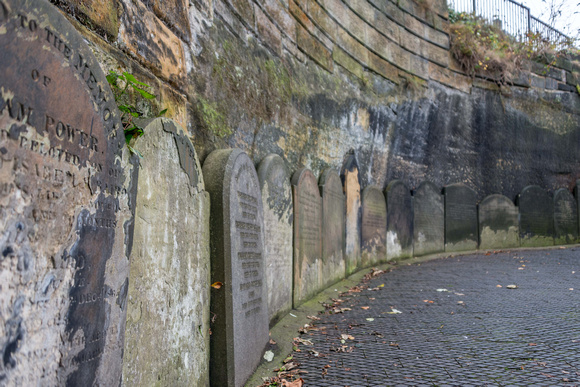Further details of the cemetery
The workings and operation of the cemetery predate the Cathedral to which it does not belong. The Cathedral, which began construction in 1903, occupies most of rock outcrop above the cemetery known as St James Mount (also known as Quarry Hill or Mount Zion) that in 1771 was established as Liverpool's first public park.The cemetery has two entrances which are always open.
At the north side a stone path lined with recycled grave stones descends through a short tunnel between The Oratory and the main entrance of the cathedral. The southern entrance near Upper Parliament street is through a stone arch between the Garden Lodge and the steps up to the Mount. Notable features include the Huskisson memorial, a natural spring and a system of broad ramps lined with catacombs.
The original stone quarry began operation in the 16th century.The tunnel workings (most of which are blocked) probably happened in the 18th century. In 1773 the quarry workers discovered a running spring, which still flows today.There were windmills in operation at the edge of the quarry until the 1820s.The quarry was exhausted in 1825.
In 1826 the young architect John Foster Jr was commissioned to design and lay out a cemetery along the same lines as Père Lachaise Cemetery, Paris with £20,000 raised by public subscription


